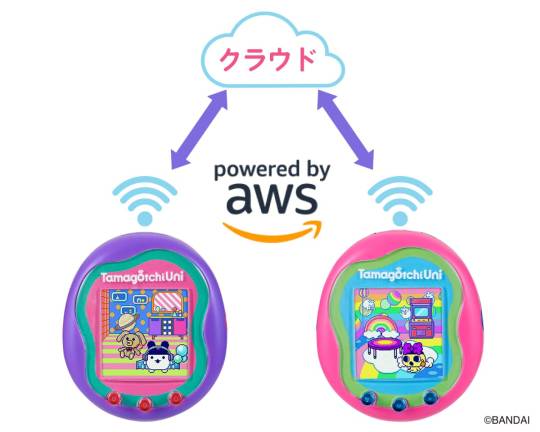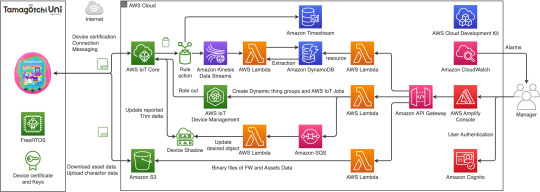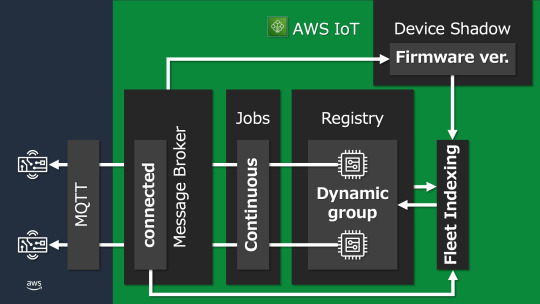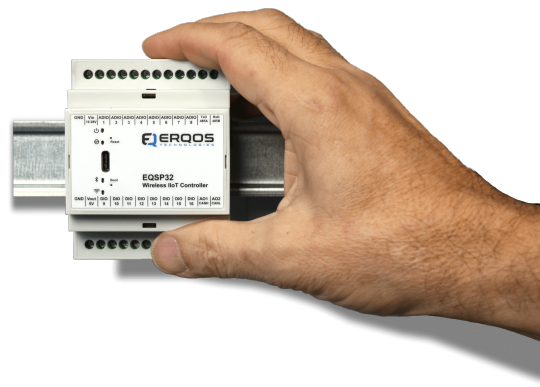#IoT firmware development
Text
Teksun Inc is an ISO 9001:2015 certified IoT and AI Solutions Company specializing in Product Engineering Services supporting ODM & OEM for numerous B2B Applications & Use Cases. To know more about browse: https://teksun.com/ Contact us ID: [email protected]
#Teksun#Technology services#Artificial intelligence#Machine learning#IoT solutions#Embedded systems#Product engineering#Software development#Hardware design#Firmware development#Cloud computing#Industrial automation#Wireless communication#IoT applications
0 notes
Text
How Avench’s Methodology Creates Successful Embedded Systems?
#BSP Development#Middleware development#Linux development#Embedded linux#Application software development#Embedded operating system#IoT device firmware#Breadboard prototype#Low volume manufacturing
0 notes
Text
IoT in Agriculture is Booming!

Industries are shifting towards evolution with trending technologies like Internet of Things (IoT), AR/VR, AI and machine learning. IoT (one of them) is having more impact as it seamlessly uses consistent connectivity, helping different platforms to perform efficiently.
Countries are engaging with the leading IoT development companies to make their agriculture industry better year by year. With endless possibilities to utilize IoT applications, governments are taking necessary steps to make the industry smart with intelligent systems.
Solutions like automated analytics, intelligent data systems, and digitally-equipped crop management platforms, can make a huge difference as compared to traditional systems. As a result, there is a great impact on organic farming, cropping, and other agricultural activities that can be benefited with IoT solutions.
#IoT Development Company#IoT Solutions#IoT Development Services#IoT Application Development Company#IoT Application Development Company India#IoT firmware Design#IoT-Enabled Mobility Services#IoT Services#IoT App Development Company in USA#IoT Application Development Company USA
1 note
·
View note
Text
Embedded Systems Training in Kolkata
Learn Embedded Systems Development from 10yrs experienced Industrial Project Developer & Trainer.
Core Design concept | Industrial Design | Real Life Application Prototype | More than 40 Practical Projects
Visit us at http://www.iectelectronics.com

#embedded systems training#microcontroller training#iot training institute kolkata#firmware development training in kolkata
1 note
·
View note
Text
What Future Trends in Software Engineering Can Be Shaped by C++
The direction of innovation and advancement in the broad field of software engineering is greatly impacted by programming languages. C++ is a well-known programming language that is very efficient, versatile, and has excellent performance. In terms of the future, C++ will have a significant influence on software engineering, setting trends and encouraging innovation in a variety of fields.
In this blog, we'll look at three key areas where the shift to a dynamic future could be led by C++ developers.
1. High-Performance Computing (HPC) & Parallel Processing
Driving Scalability with Multithreading
Within high-performance computing (HPC), where managing large datasets and executing intricate algorithms in real time are critical tasks, C++ is still an essential tool. The fact that C++ supports multithreading and parallelism is becoming more and more important as parallel processing-oriented designs, like multicore CPUs and GPUs, become more commonplace.
Multithreading with C++
At the core of C++ lies robust support for multithreading, empowering developers to harness the full potential of modern hardware architectures. C++ developers adept in crafting multithreaded applications can architect scalable systems capable of efficiently tackling computationally intensive tasks.

C++ Empowering HPC Solutions
Developers may redefine efficiency and performance benchmarks in a variety of disciplines, from AI inference to financial modeling, by forging HPC solutions with C++ as their toolkit. Through the exploitation of C++'s low-level control and optimization tools, engineers are able to optimize hardware consumption and algorithmic efficiency while pushing the limits of processing capacity.
2. Embedded Systems & IoT
Real-Time Responsiveness Enabled
An ability to evaluate data and perform operations with low latency is required due to the widespread use of embedded systems, particularly in the quickly developing Internet of Things (IoT). With its special combination of system-level control, portability, and performance, C++ becomes the language of choice.
C++ for Embedded Development
C++ is well known for its near-to-hardware capabilities and effective memory management, which enable developers to create firmware and software that meet the demanding requirements of environments with limited resources and real-time responsiveness. C++ guarantees efficiency and dependability at all levels, whether powering autonomous cars or smart devices.
Securing IoT with C++
In the intricate web of IoT ecosystems, security is paramount. C++ emerges as a robust option, boasting strong type checking and emphasis on memory protection. By leveraging C++'s features, developers can fortify IoT devices against potential vulnerabilities, ensuring the integrity and safety of connected systems.
3. Gaming & VR Development
Pushing Immersive Experience Boundaries
In the dynamic domains of game development and virtual reality (VR), where performance and realism reign supreme, C++ remains the cornerstone. With its unparalleled speed and efficiency, C++ empowers developers to craft immersive worlds and captivating experiences that redefine the boundaries of reality.
Redefining VR Realities with C++
When it comes to virtual reality, where user immersion is crucial, C++ is essential for producing smooth experiences that take users to other worlds. The effectiveness of C++ is crucial for preserving high frame rates and preventing motion sickness, guaranteeing users a fluid and engaging VR experience across a range of applications.

C++ in Gaming Engines
C++ is used by top game engines like Unreal Engine and Unity because of its speed and versatility, which lets programmers build visually amazing graphics and seamless gameplay. Game developers can achieve previously unattainable levels of inventiveness and produce gaming experiences that are unmatched by utilizing C++'s capabilities.
Conclusion
In conclusion, there is no denying C++'s ongoing significance as we go forward in the field of software engineering. C++ is the trend-setter and innovator in a variety of fields, including embedded devices, game development, and high-performance computing. C++ engineers emerge as the vanguards of technological growth, creating a world where possibilities are endless and invention has no boundaries because of its unmatched combination of performance, versatility, and control.
FAQs about Future Trends in Software Engineering Shaped by C++
How does C++ contribute to future trends in software engineering?
C++ remains foundational in software development, influencing trends like high-performance computing, game development, and system programming due to its efficiency and versatility.
Is C++ still relevant in modern software engineering practices?
Absolutely! C++ continues to be a cornerstone language, powering critical systems, frameworks, and applications across various industries, ensuring robustness and performance.
What advancements can we expect in C++ to shape future software engineering trends?
Future C++ developments may focus on enhancing parallel computing capabilities, improving interoperability with other languages, and optimizing for emerging hardware architectures, paving the way for cutting-edge software innovations.
9 notes
·
View notes
Text
Tamagotchi Uni Uses AWS, Amazon Web Services

The Tamagotchi Uni is the first Tamagotchi to ever connect to Wi-Fi, which enables it to receive over the area updates, programing changes, and more. How exactly is this all being done by Bandai Japan? Well Bandai has built the Tamagotchi Uni on the Amazon Web Services platform (AWS).
The details of this are actually outlined on a recent article on the Amazon Web Services blog. The blog post provided a detailed view on how Tamagotchi Uni use AWS to achieve secure and reliable connectivity and quickly deliver new content updates without leaving customers waiting.It details that Bandai Co., Ltd., the company responsible for product development and sales, adopted AWS IoT to realize the concept of globally interconnected Tamagotchi, enabling users to interact with each other.

Bandai partnered with their cloud development partner, Phoenisys, Inc., to connect and manage million of Tamagotchi devices. One of the critical features was the over the air software updates which uses the jobs feature of AWS IoT Device Management to distribute the latest firmware across all Tamagotchi devices without causing any delays to customers.
To make Tamagotchi Uni IoT-enabled, Bandai establish the three key goals, which was implementing secure connections, scaling the load-balancing resources to accommodate over 1 million connections worldwide, and optimizing operational costs. The article even features the AWS architecture for the Tamagotchi Uni, which is interesting.

AWS IoT Core is used to manage the state of each Tamagotchi Uni device, which helps retrieve distributed items and content. AWS IoT Device Management is used to index the extensive Tamagotchi Uni fleet and create dynamic groups on the state of each device, facilitating efficient over-the-air (OTA) updates. FreeRTOS is used to minimize the amount of resources and code required to implement device-to-cloud communication for efficient system development. AWS Lambda is used to process tasks, delivering new announcements, and registering assets. Amazon DynamoDB is used as a fully managed, sever less, key-value noSQL database that runs high-performance applications at any scale. Amazon Simple Storage Service (Amazon S3) is used for object storage service, each of these data stores are used to manage the various resources within Tamagotchi Uni. Lastly, Amazon Timestream is used to accumulate historical data of user’s actions like downloading items and additional content.

The article also details how Bandai is handling large scale firmware updates to Tamagotchi Uni devices which are executed at a rate of 1,000 units per hour which would have resulted in a delay for some devices. The team actually designed job delivery as a continuous job which automatically updates the devices under certain conditions. This is using fleet indexing that runs a query to see which devices meet the criteria for the update to be pushed out to it.
Lastly the article details how Bandai conducted system performance testing at a large-scale to emulate what it would be like after the device was released. They verified the smooth operation and performance of updates through their testing.
Be sure to check out the full article here on the Amazon AWS blog.
#tamapalace#tamagotchi#tmgc#tamagotchiuni#tamagotchi uni#uni#tamatag#virtualpet#bandai#amazonaws#amazon aws#aws#amazonwebservices#amazon web services#blog
14 notes
·
View notes
Text
Brighten Smarter: Expert IoT Engineering for Your Lighting
Discover the power of IoT engineering to revolutionize your lighting experience! Our seasoned team brings decades of combined expertise in firmware development, software architecture, and hardware design to the table.
With our help, your lighting system becomes a smart, responsive ecosystem tailored precisely to your needs. Imagine controlling your lights effortlessly from your smartphone, no matter where you are. Our software wizards ensure intuitive interfaces and seamless user experiences, while our back-end team handles database management and server infrastructure with finesse.
From embedded systems to wireless technology, our IoT hardware experts ensure every component works in perfect harmony. Say goodbye to outdated systems and embrace the future of lighting automation with us!
1 note
·
View note
Text
Internet of Things Development Services
Internet of Things (IoT) development services encompass the design, development, integration, and management of interconnected physical devices that are enabled to collect and exchange data over the internet or other communication networks. These services aim to create a network of "smart" devices, often embedded with sensors, software, and other technologies, that can interact with each other and with their environment to perform specific functions without requiring human-to-human or human-to-computer interaction.
IoT development services can be quite diverse, covering a wide range of applications across various industries, such as smart homes, smart cities, healthcare, agriculture, manufacturing, and transportation. The services typically include:
1. Consultation and Strategy: Understanding the client's business needs, identifying potential IoT solutions, and developing a strategic plan for IoT implementation.
2. Hardware Design and Selection: Choosing the right sensors, actuators, and other hardware components that will form the IoT devices, as well as designing custom hardware if necessary.
3. Software Development: Developing the software that will run on the IoT devices, including firmware, middleware, and applications that enable device functionality and data processing.
4. Connectivity Solutions: Ensuring that IoT devices can connect to the internet or other devices through various protocols like Wi-Fi, Bluetooth, Zigbee, cellular networks, or low-power wide-area networks (LPWAN).
5. Data Analytics and Processing: Setting up platforms to collect, store, and analyze the data generated by IoT devices, often making use of cloud services and big data technologies.
6. User Interface and Experience: Creating user-friendly interfaces for users to interact with the IoT system, which may include dashboards, mobile apps, or web applications.
7. Security: Implementing robust security measures to protect IoT devices and the data they handle from unauthorized access, tampering, and other cyber threats.
8. Integration Services: Integrating IoT solutions with existing business systems and processes to enhance functionality and ensure seamless operation.
9. Testing and Quality Assurance: Rigorously testing the IoT system to ensure it is reliable, scalable, and secure before deployment.
10. Maintenance and Support: Providing ongoing support and maintenance to address any issues, update software, and ensure the IoT system continues to function optimally.
11. Compliance and Standards: Ensuring that IoT solutions comply with industry standards and regulations, which can vary depending on the application and region.
Benefits of IoT Development Services:
- Enhanced Efficiency: IoT can automate processes and provide real-time operational insights, leading to increased efficiency and productivity.
- Cost Savings: By optimizing resource usage and reducing waste, IoT solutions can help save costs.
- Improved Decision-Making: Access to data and analytics enables better-informed decisions and predictive maintenance capabilities.
- New Business Models: IoT opens up opportunities for new services and business models, such as usage-based pricing or product-as-a-service models.
- Better Customer Experience: IoT can lead to improved product functionality and new ways of engaging with customers.
- Increased Safety: In industrial settings, IoT devices can monitor conditions and provide alerts to prevent accidents and ensure worker safety.
IoT development services are critical for businesses looking to leverage the power of connected devices to innovate and transform their operations. As the number of IoT devices continues to grow rapidly, the demand for these services is expected to increase, driving further advancements in IoT technology and applications.
0 notes
Text
can vpn change my bluetooth location
🔒🌍✨ Get 3 Months FREE VPN - Secure & Private Internet Access Worldwide! Click Here ✨🌍🔒
can vpn change my bluetooth location
VPN geolocation masking
VPN geolocation masking is a feature offered by Virtual Private Network (VPN) services that allows users to hide their actual physical location and appear as if they are accessing the internet from a different location. This is achieved by routing the user's internet connection through servers located in various regions around the world, thereby masking their true IP address and providing them with a different virtual location.
There are several reasons why individuals choose to utilize VPN geolocation masking. One of the primary reasons is to enhance online privacy and security. By masking their true location, users can prevent websites, internet service providers, and other third parties from tracking their online activities and personal information.
Another common use of VPN geolocation masking is to bypass geo-restrictions. Many streaming services, websites, and online content are restricted to specific regions due to licensing agreements or government regulations. By using a VPN to mask their geolocation, users can access blocked content and enjoy a more diverse online experience.
Additionally, VPN geolocation masking can help users avoid targeted advertising based on their actual location. By appearing to be located in a different region, users may see different ads or experience less personalized tracking.
It is important to note that while VPN geolocation masking can offer users increased privacy and access to geo-restricted content, it is not foolproof. Users should choose a reputable VPN provider and be aware of potential security risks associated with using VPN services.
Overall, VPN geolocation masking is a valuable tool for those seeking to enhance their online privacy, access restricted content, and maintain a sense of anonymity while browsing the internet.
Bluetooth location spoofing
Title: Understanding Bluetooth Location Spoofing: Risks and Prevention Measures
Bluetooth location spoofing is a technique used to manipulate the location data transmitted by Bluetooth-enabled devices, such as smartphones, tablets, and IoT devices. While Bluetooth technology is commonly used for wireless communication and device connectivity, it also broadcasts unique identifiers called MAC addresses, which can be exploited for location tracking.
One of the primary risks associated with Bluetooth location spoofing is privacy invasion. By spoofing the location of a Bluetooth device, malicious actors can track the movements of individuals without their consent. This can lead to various privacy violations, including targeted advertising, stalking, and even physical harm.
Furthermore, Bluetooth location spoofing can be used to deceive location-based services and applications. For example, a malicious actor could spoof the location of their device to access restricted content or services only available in certain geographic locations. This can result in financial losses for businesses and undermine the integrity of location-based authentication systems.
To mitigate the risks of Bluetooth location spoofing, both individuals and organizations can take several preventive measures. One approach is to disable Bluetooth when not in use, as this reduces the frequency of location broadcasts and makes it harder for malicious actors to track your movements. Additionally, users should be cautious when connecting to unfamiliar Bluetooth devices or networks, as these may be used as vectors for location spoofing attacks.
Furthermore, device manufacturers and software developers should implement stronger security measures to prevent Bluetooth location spoofing. This includes encrypting location data, implementing secure pairing protocols, and regularly updating firmware to patch vulnerabilities.
In conclusion, Bluetooth location spoofing poses significant risks to privacy and security. By understanding these risks and taking proactive measures to prevent exploitation, individuals and organizations can better protect themselves against malicious attacks and unauthorized tracking.
VPN impact on device location
A VPN, or Virtual Private Network, has a significant impact on the perceived location of a device. When you connect to a VPN server, your internet traffic is encrypted and routed through the server, masking your true IP address and location. This allows you to appear as if you are accessing the internet from a different geographic location than where you physically are.
The primary benefit of using a VPN to change your device location is enhanced online privacy and security. By hiding your real IP address, a VPN helps to protect your identity and sensitive data from hackers, trackers, and surveillance. This is particularly important when using public Wi-Fi networks, where cyber threats are more prevalent.
Moreover, bypassing geolocation restrictions is another advantage of VPNs. Many online services, streaming platforms, and websites employ geoblocking to restrict access based on users' locations. By connecting to a VPN server in a different country, you can circumvent these restrictions and access content that is otherwise unavailable in your region.
It's worth noting that while a VPN can change your device location virtually, certain services and apps may still be able to detect the use of a VPN. In some cases, you may encounter issues with accessing specific websites or services while using a VPN. Additionally, the speed and performance of your internet connection may be affected when routing through a VPN server.
In conclusion, a VPN can have a significant impact on your device location by providing enhanced privacy, security, and the ability to bypass geolocation restrictions. However, it's essential to consider potential limitations and trade-offs when using a VPN to change your online location.
Bluetooth GPS manipulation with VPN
Bluetooth GPS manipulation in conjunction with VPN technology offers a range of possibilities for users looking to enhance their privacy and security while using location-based services. By employing a Virtual Private Network (VPN) in combination with Bluetooth technology, users can manipulate their GPS location information to appear as if they are in a different physical location than they actually are. This can be particularly useful for individuals looking to maintain their privacy and anonymity while using GPS-enabled apps or services.
One potential application of Bluetooth GPS manipulation with VPN is the ability to access location-specific content that may be restricted based on geographical location. By manipulating their GPS coordinates through the use of a VPN, users can access region-locked content such as streaming services, websites, or gaming platforms that are otherwise inaccessible in their location. This can provide users with a way to bypass geo-blocking and enjoy a more unrestricted online experience.
Furthermore, manipulating GPS information via Bluetooth and VPN can also be utilized for enhanced privacy protection. By obscuring their true location and identity, users can prevent tracking by third parties and protect their personal information from being exposed. This can be especially important for individuals who prioritize their online security and wish to minimize the risks associated with sharing their precise location data.
In conclusion, the combination of Bluetooth GPS manipulation with VPN technology presents a novel approach for users seeking to leverage location-based services while safeguarding their privacy and security. By exploring the diverse applications of this innovative technology, individuals can unlock a new realm of possibilities for controlling their digital footprint and enhancing their online experience.
VPN and Bluetooth location falsification
Title: Enhancing Privacy: Using VPN and Bluetooth Location Falsification
In an era where digital privacy is increasingly under threat, individuals are turning to innovative methods to safeguard their online activities. Two such techniques gaining traction are Virtual Private Networks (VPNs) and Bluetooth location falsification. While VPNs have long been heralded as a tool for anonymity, Bluetooth location falsification is a relatively newer concept, but equally effective in bolstering privacy.
VPNs operate by encrypting internet traffic, routing it through servers located in different geographic regions, thereby masking the user's true IP address and location. This not only prevents ISPs and websites from tracking online activities but also enables users to bypass geo-restrictions on content.
On the other hand, Bluetooth location falsification involves manipulating the location data transmitted by a device's Bluetooth signal. By spoofing their location, users can prevent apps and services from accurately tracking their movements and physical whereabouts. This is particularly useful in scenarios where apps require access to Bluetooth for functionalities such as location-based services or targeted advertising.
Combining VPNs with Bluetooth location falsification provides a comprehensive approach to enhancing digital privacy. While VPNs protect online activities from surveillance and tracking, Bluetooth location falsification safeguards against location-based tracking in the physical world.
However, it's important to note that while these techniques are effective in enhancing privacy, they are not foolproof. Users should still exercise caution and adopt additional measures such as using encrypted messaging apps and regularly updating security software to mitigate risks.
In conclusion, in the age of increasing digital surveillance, leveraging tools like VPNs and Bluetooth location falsification can empower individuals to take control of their online privacy. By incorporating these techniques into their digital arsenal, users can navigate the digital landscape with confidence, knowing that their privacy remains intact.
0 notes
Text
Unlocking the Potential of Embedded Systems at IPCS Global, Chennai
Introduction:
Welcome to IPCS Global, Chennai, where innovation meets excellence in the realm of embedded systems. As the world becomes increasingly interconnected, embedded systems play a pivotal role in powering various industries, from automotive and healthcare to consumer electronics and beyond. At IPCS Global, we are committed to harnessing the full potential of embedded technology to drive innovation, efficiency, and growth.
Exploring Embedded Systems:
Embedded systems are at the heart of modern technology, serving as the backbone of numerous devices and applications. These systems typically consist of a combination of hardware and software designed to perform specific functions within a larger system. From microcontrollers and sensors to communication interfaces and operating systems, embedded systems encompass a wide array of components tailored to meet the unique requirements of diverse applications.
Why Choose IPCS Global?
At IPCS Global, we pride ourselves on being at the forefront of embedded system solutions. Here's why our clients choose us:
Expertise: With a team of highly skilled engineers and technicians, we possess the expertise to design, develop, and deploy cutting-edge embedded systems tailored to our clients' specific needs.
Innovation: Innovation is at the core of everything we do. We continuously explore emerging technologies and industry trends to deliver innovative solutions that drive business success.
Quality: We adhere to stringent quality standards throughout the entire development process, ensuring that our embedded systems meet the highest levels of performance, reliability, and security.
Customer-Centric Approach: At IPCS Global, customer satisfaction is our top priority. We work closely with our clients to understand their unique requirements and deliver customized solutions that exceed their expectations.
Our Services:
IPCS Global offers a comprehensive range of embedded system services, including:
Embedded System Design and Development
Hardware Design and Prototyping
Firmware Development
Device Driver Development
System Integration and Testing
Embedded Software Development
IoT Solutions
Customized Training Programs
Partnering for Success:
We believe in the power of collaboration and actively seek partnerships with industry leaders, technology providers, and academic institutions to stay at the forefront of innovation. By fostering a culture of collaboration, we can leverage collective expertise and resources to drive meaningful advancements in embedded technology.
Conclusion:
At IPCS Global, Chennai, we are passionate about pushing the boundaries of embedded technology to create a better, more connected world. Whether you're looking to develop a new embedded system, optimize an existing solution, or explore the potential of IoT, we have the expertise and resources to help you succeed. Join us on this exciting journey as we continue to unlock the full potential of embedded systems together.
0 notes
Text
Teksun Inc is a leading Next Generation IoT and AI turn-key Product Engineering Services provider. Teksun is an ISO 9001:2015 certified company headquartered in Silicon Valley, California To know more about browse: https://teksun.com/ Contact us ID: [email protected]
#IoT solutions#AI development#Product engineering services#Next-generation technology#IoT hardware design#Embedded systems#Firmware development#Cloud connectivity#Data Analytics#Wireless communication#Industrial automation#Custom software#IoT security#Teksun
0 notes
Text
Everything you need to know about Printed Circuit Board
#BSP Development#Middleware development#Linux development#Embedded linux#Application software development#Embedded operating system#IoT device firmware#Breadboard prototype#Low volume manufacturing
0 notes
Text
Explore the Features of ESP8266 NodeMcu WiFi Development Board
The NodeMCU is an ESP8266 WiFi based microcontroller board that helped overcome some of the difficulties associated with several versions of boards based on the ESP8266 WiFi module/chips from Espressif. As the popularity of Arduino boards increased, the demand for boards which comes embedded with some of the add-ons used with the Arduino increased. One of the most popular add-ons were the WiFi modules which are used to connect Arduino boards to the internet.
Several boards were released by different manufacturers which used the Arduino form factor and had onboard WiFi module, but none of these boards became as popular as the NodeMCU. Today, we will be exploring how to use the ESP8266 NodeMCU board in projects and especially how to easily program the board using the Arduino IDE. The NodeMCU is an ESP8266 WiFi based microcontroller board that helped overcome some of the difficulties associated with several versions of boards based on the ESP8266 WiFi module/chips from Espressif.
ESP8266 NodeMcu WiFi Development Board Features:-
It is based on ESP8266, integates GPIO, PWM, IIC, 1-Wire and ADC all in one board.
Power your developement in the fastest way combinating with NodeMCU Firmware!
USB-TTL included, plug&play
10 GPIO, every GPIO can be PWM, I2C, 1-wire
Open source IoT Platform
Easily Programmable
Low cost & Simple to Implement
WI-FI enabled
ESP8266 NodeMcu WiFi Development Board Applications:-
Home Appliances
Home Automation
Smart Plug and lights
Mesh Network
Industrial Wireless Control
Baby Monitors
IP Cameras
Sensor Networks
Wearable Electronics
To know more about all latest Products of ESP8266 WIFI Modules you can visit at www.campuscomponent.com
0 notes
Text
Empowering Your Business with Custom IoT Application Development Services
Introduction
In today's rapidly evolving technological landscape, the Internet of Things (IoT) stands out as a transformative force, offering unprecedented opportunities for businesses to enhance efficiency, improve user experiences, and drive growth. At the heart of this revolution lies IoT application development, a process that involves creating tailored software and firmware solutions to enable seamless communication and data exchange among interconnected devices. In this article, we delve into the significance of IoT application development, its key components, and the myriad benefits it offers to businesses across diverse industries.
Understanding Custom IoT Application Development Services
Custom IoT application development services encompass a spectrum of specialized solutions tailored to meet the unique needs and objectives of businesses. These services encompass:
Device Software Development: Crafting robust software and firmware solutions that facilitate data collection, sensor interaction, and device-to-device communication, ensuring optimal performance and reliability.
Cloud Infrastructure Setup and Integration: Establishing scalable and secure cloud-based infrastructure to store, process, and analyze data generated by IoT devices, enabling real-time insights and seamless integration with existing systems.
Data Analysis and Visualization Tools: Implementing advanced analytics algorithms and visualization techniques to derive actionable insights from vast volumes of IoT data, empowering businesses to make informed decisions and drive innovation.
User Interface Design: Developing intuitive and user-friendly interfaces, including web and mobile applications, to enable seamless interaction and control of IoT devices, enhancing user experiences and driving engagement.
Significance of Custom IoT Application Development Services
Enhanced Operational Efficiency: By automating processes, optimizing resource utilization, and enabling real-time monitoring and control, custom IoT applications streamline operations across various sectors, driving efficiency and productivity gains.
Personalized User Experiences: Tailored IoT applications empower businesses to deliver personalized experiences to users, offering real-time data access, personalized recommendations, and intuitive interfaces that enhance satisfaction and loyalty.
Data-Driven Decision Making: Custom IoT applications harness the power of data analytics to provide businesses with valuable insights, enabling them to identify trends, anticipate customer needs, and make informed strategic decisions.
Cost Savings and ROI: By optimizing processes, reducing downtime, and minimizing resource wastage, custom IoT applications deliver tangible cost savings and a rapid return on investment (ROI), driving bottom-line growth and profitability.
Challenges and Opportunities in Custom IoT Application Development
Security: Addressing cybersecurity threats and implementing robust security measures to safeguard sensitive data and protect against potential breaches, ensuring the integrity and trustworthiness of IoT ecosystems.
Interoperability: Overcoming interoperability challenges to enable seamless communication and collaboration among diverse IoT devices, protocols, and platforms, fostering interoperability and compatibility across the ecosystem.
Scalability: Designing scalable IoT solutions capable of supporting an ever-expanding network of devices and data streams, ensuring flexibility and agility to meet evolving business needs and demands.
Power Efficiency: Prioritizing power efficiency in IoT device design and application development to extend battery life, minimize energy consumption, and optimize performance, ensuring sustainable and eco-friendly operations.
Conclusion
In conclusion, custom IoT application development services offer businesses a unique opportunity to harness the full potential of the Internet of Things, driving innovation, efficiency, and growth. By leveraging tailored solutions that address their specific needs and challenges, businesses can unlock new opportunities, enhance competitiveness, and deliver superior value to customers. As IoT continues to reshape industries and redefine business models, embracing custom IoT application development services is essential for businesses looking to thrive in the digital age.
0 notes
Text
The Future is Now: How Firmware Development is Revolutionizing Electronics!
In a world where technology advancements seem to happen at the speed of light, firmware development stands out as a quiet yet powerful force driving the revolution in electronics.
Imagine a future where everyday devices not only respond to our commands but also anticipate our needs, seamlessly integrating into our lives like never before.
This future is not just a distant dream—it is rapidly becoming reality thanks to the innovative work being done in firmware development.
From smart homes that adjust temperature and lighting based on your preferences to wearable devices that monitor your health in real-time, firmware development is at the heart of these cutting-edge technologies.
Gone are the days of static gadgets with limited functionality; today's electronics are dynamic, adaptive, and constantly evolving, all thanks to the intricate codes running beneath their sleek exteriors.
As we delve deeper into this article, we will explore how firmware development is reshaping our relationship with electronics and paving the way for a truly interconnected future.
Firmware development is at the forefront of revolutionizing the electronics industry, offering a gateway to enhanced functionality and performance in devices.
With advancements in technology, firmware is becoming increasingly sophisticated, allowing for seamless integration between hardware and software components. This level of customization enables manufacturers to optimize their products and deliver cutting-edge solutions to consumers.
One of the key benefits of electronics firmware development is its ability to future-proof devices by providing over-the-air updates. This means that even after a product has been released, improvements can be continuously made through software updates, ensuring longevity and relevance in the rapidly evolving tech landscape.
Furthermore, firmware development enables efficient power management strategies, enhancing energy efficiency and extending battery life in electronic devices.
As we move towards an era defined by IoT and interconnected smart devices, firmware development will play a crucial role in shaping the functionality and performance of these technologies.
By harnessing the power of firmware customization, manufacturers can create innovative solutions that cater to the unique needs of consumers while staying ahead of market trends.
1 note
·
View note
Text
Investigating the Flexibility of ESP32 Commotion and Arduino Clamour for WIFI and Bluetooth PLC Applications
Within the ever-evolving scene of mechanical mechanisation, the request for flexible and productive arrangements proceeds to rise. Among the heap of advances accessible, ESP32 Commotion and Arduino Noise stages have developed as capable contenders, advertising consistent integration, strong usefulness, and unparalleled adaptability. With the coming of WIFI and Bluetooth capabilities, these stages have ended up as irreplaceable components in cutting edge Programmable Rationale Controllers (PLCs), revolutionising the way businesses work.
ESP32 DIN and Arduino DIN speak to a modern era of PLCs that use the control of remote communication conventions such as WiFi and Bluetooth. These stages serve as the spine for building shrewd, associated frameworks that streamline forms, improve efficiency, and optimise asset utilisation over assorted mechanical segments.

The ESP32 Noise, fuelled by the ESP32 microcontroller, is eminent for its remarkable execution, moo control utilisation, and broad network alternatives. Prepared with built-in WiFi and Bluetooth modules, the ESP32 Commotion offers consistent integration with existing systems and peripherals, making it a perfect choice for IoT (Web of Things) applications and mechanical computerization ventures.
Additionally, Arduino Clamour stages, built upon the well-known Arduino environment, give a recognizable and user-friendly advancement environment for engineers and enthusiasts alike. With bolster for WiFi and Bluetooth communication modules, Arduino Commotion sheets engage clients to make custom PLC arrangements custom-made to particular industry prerequisites.
The integration of WiFi PLC and Bluetooth PLC opens up a heap of conceivable outcomes for inaccessible checking, information procurement, and control in mechanical situations. WiFi network empowers real-time communication between PLCs and central servers, encouraging information trade, farther diagnostics, and prescient support procedures.
Bluetooth usefulness, on the other hand, empowers consistent communication between PLCs and portable gadgets, permitting administrators to screen and control mechanical forms from a place inside the office. Whether it's arranging parameters, upgrading firmware, or investigating issues, Bluetooth-enabled PLCs offer unparalleled comfort and openness.
In expansion to remote communication, ESP32 Noise and Arduino Noise stages boast a wealthy array of highlights custom fitted to the wants of mechanical applications. From vigorous industrial-grade development to flexible I/O interfacing, these stages offer the unwavering quality and versatility required to handle complex robotization challenges.
The measured nature of ESP32 Clamour and Arduino Noise stages permits for simple extension and customization, empowering clients to coordinate extra sensors, actuators, and communication modules to suit particular application prerequisites. Whether it's meddled with bequest hardware or consolidating progressed detecting innovations, these stages give the flexibility to adjust and advance with changing industry requests.
Moreover, the open-source nature of ESP32 Clamour and Arduino Clamour stages cultivates collaboration and advancement inside the mechanical computerization community. Designers and engineers can use a wealth of assets, libraries, and community-driven ventures to quicken improvement cycles and bring cutting-edge arrangements to advertise quicker than ever recently.
In conclusion, the meeting of ESP32 Commotion and Arduino Commotion stages with WiFi and Bluetooth innovation speaks to a worldview move within the domain of mechanical robotization. By combining the control of remote communication with the flexibility of PLCs, these stages engage businesses to grasp the period of Industry 4.0 and open unused levels of productivity, efficiency, and competitiveness in today's energetic commercial centre.
0 notes